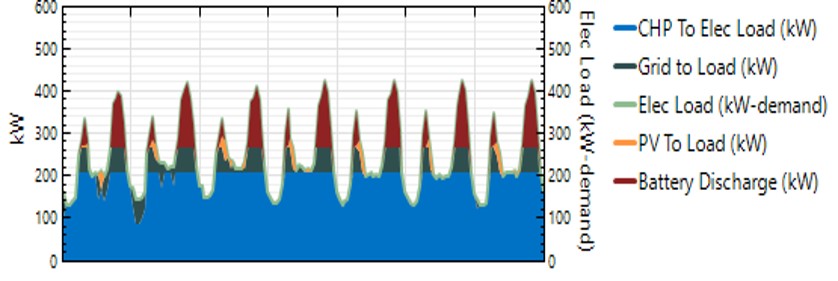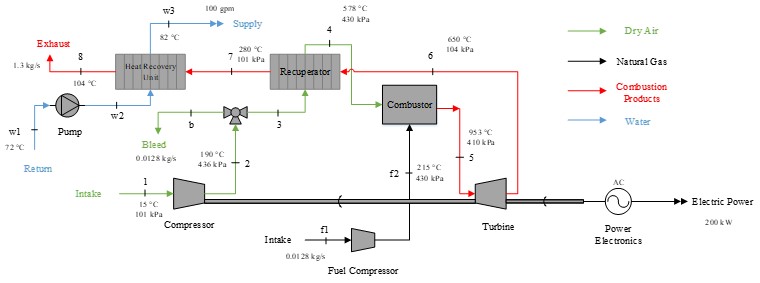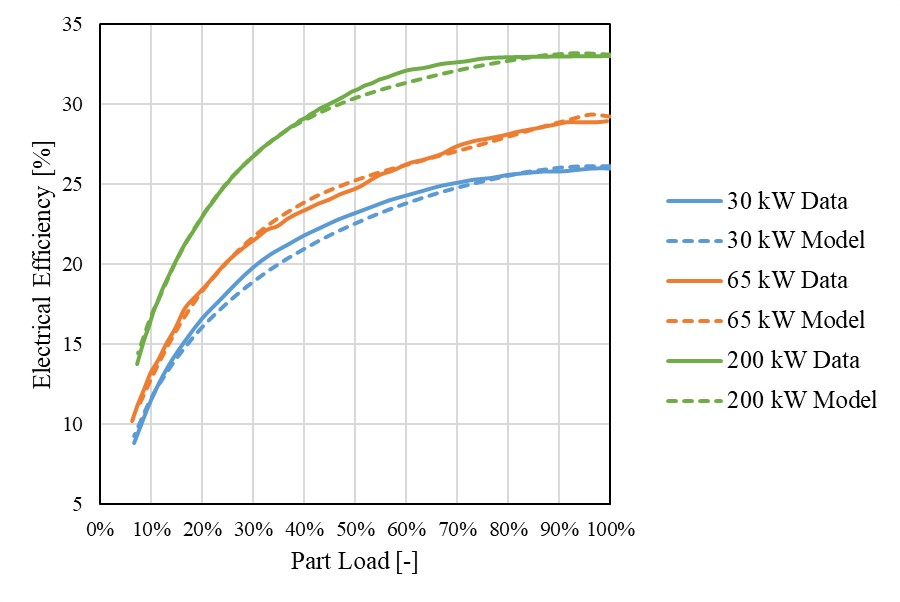Modeling and Systems Analysis of Alternative Fuel Production and Utilization Systems
Modeling of Combined Heat and Power (CHP) Configured Prime Movers for Cost Optimization of Hybrid Renewable-CHP Systems in Commercial Building Applications
Deployment of distributed energy resources (DER) is becoming increasingly popular as building owners seek to reduce utility costs and address resiliency requirements. While screening tools commonly exist for single technology systems, no tool exists to provide techno-economic optimization and resilience analysis for hybrid systems comprised of combined heat and power (CHP), Solar Photovoltaics (PV), Wind, and/or Battery Energy Storage System (BESS). The goal of this work is to develop the tool’s ability to screen for hybrid DER systems and increase the deployment of CHP. This goal will be accomplished by adding CHP performance maps to the National Renewable Energy Laboratory’s (NREL) publicly available web tool, REopt Lite, to predict the technical and economic feasibility of integrated DER technologies. Ultimately, REopt will provide an optimal recommendation of system size and dispatch strategy based on cost minimization or resilience requirements.

Example of dispatch strategy for a hybrid renewable-CHP system
However, wide-ranging performance maps of CHP prime movers operating at various conditions such as part load, non-ISO ambient weather, and user-specified steam or hot water grade are difficult to obtain without the use of thermodynamic modeling. Consequently, AESG is collaborating with NREL to predict CHP prime mover performance at a diversity of operating conditions. Of course, multiple prime mover types exist in the commercial market; there may also be a myriad of different system configurations within each prime mover type. The two factors pose a challenge in the attempt to characterize the vast majority of commercially available CHP systems consisting of spark ignition engines, microturbines, combustion turbines, and phosphoric acid or molten carbonate fuel cells. For instance, AESG has tackled off-design modeling of microturbine systems. The variable shaft speed operation of microturbines incorporates turbomachinery maps, dynamic heat exchanger correlations, and system controls which dictate electrical and CHP efficiency at part load.

200 kW microturbine CHP system configuration

Part load electrical efficiency of 30, 65, and 200 kW microturbine systems at ISO weather conditions
While the creation of performance maps is necessary, the project requires incorporation of the model results into a mixed integer linear program (MILP). Therefore, processing of results demands mindfulness in ensuring compatibility with the optimization program. AESG looks to incorporate the advanced CHP modeling into the MILP without the creation of non-linearities nor new decision variables to ensure that demanding solve times are met.
FUNDING: NREL / DOE AMO
Current Projects
Past Projects
Selected Publications in This Research Area
No Results Found
The page you requested could not be found. Try refining your search, or use the navigation above to locate the post.
View Other Research Areas:
HIGH-TEMPERATURE FUEL CELLS FOR MOBILE AND STATIONARY APPLICATIONS
RENEWABLES AND GRID-ENERGY STORAGE SYSTEMS
